When Spanish wine merchant Sergi Rostoll arrived in Manila from Spain in 2006, he immediately saw a gap in the restaurant market. “There was nobody offering tapas with wine, and Spanish wines and tapas go naturally together,” he recalls. “So I thought why not start something?”
Rostoll and a partner found an established deli in Ortigas (one of Metro Manila’s major commercial centres) known as Barcino Gourmet, bought into the business and added a mini-kitchen and some tables. Five years later the Barcino Group has five outlets in Manila and is known for its gambas al ajillo, croquetas, tortilla de patatas and other traditional Spanish snack favourites.

It’s the same story all over Asia, with Spanish-themed restaurants and bars with a strong tapas emphasis springing up in locations from Bali to Tokyo. This region, however, is a relatively latecomer to a global trend which, according to tradition, started more than 700 years ago in the Kingdom of Castile. The familiar story is that King Alfonso X attributed his recovery from an illness to a diet of occasional morsels of food washed down with wine, and decreed that henceforth every tavern in the kingdom would have to serve a snack, or “tapa”, with each drink.
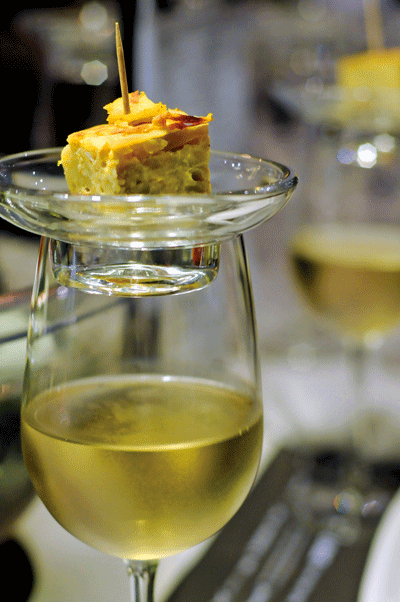
“It’s probably not true, but it’s a beautiful story,” says Pablo Amate, a leading authority on Spanish gastronomy and wine. Amate’s theory is that tavern keepers’ wives used to offer their husbands tasting samples of whatever they were preparing in the kitchen, and that gradually the hospitality extended to customers.
It may or may not all have started in Castile. Another theory has the origin and name of the “tapa” – which means “lid” in Spanish – starting in Andalusia, where a slice of bread or meat was used to prevent the flies sipping from sherry glasses. Either way, tapas have long been ubiquitous throughout Spain.
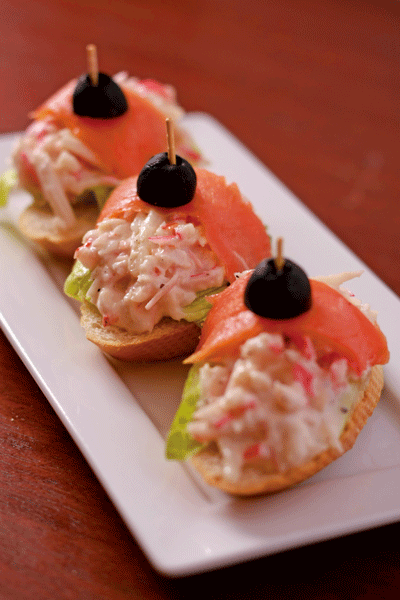
“Each area of Spain has its own tapas and they are all different,” explains Amate. “In Galicia, there is octopus, in Barcelona a lot of fresh seafood, in Madrid it’s more meat and sausage.”
Although as tapas have gradually conquered the world they have become restaurant fare as well as bar food, in Spain traditionally they are served in bars, and the food accompanies the wine, not the other way around. Another tradition is that the customer does not choose his or her own tapa. The bartender selects that, and it is included in the price of the drink.
“Now more places in Spain charge for them,” says Amate, “and different bars are known for particular specialities. People go from one bar to the next and have one drink and one tapa in each. Often you stand rather than sit, and each bar is chosen for its tapa.” This bar-hopping social ritual is known as “tapeo”, and although it is intended as a prelude to dinner, it quite often replaces it altogether.
Recent years have seen tapas feature more on restaurant menus. In fact, Amate argues that the lengthy tasting menus of Spain’s modern Michelin-starred establishments are essentially glorified tapas selections, but with the emphasis back on the food rather than the wine.
International Spanish restaurants, catering at least partly to a clientele motivated by its nostalgia for holidays in the country, have tended to offer a few tapas options, while “tapas bars” – in Spain the prefix is redundant – have tried to offer something closer to a one-stop “tapeo” experience, although just about all of them charge for the food.
The first authentic overseas tapas establishments were probably to be found in countries with particularly strong cultural links to Spain – notably Mexico and much of South America. A mixture of Spanish emigrants and tapas-fixated holidaymakers appear to have spread the culture to other countries. Tapas are widely available in the United States, Canada and all over Europe.
In Asia, the best tapas operations have been established either by entrepreneurs who have employed Spanish chefs to ensure authenticity, or by the chefs themselves. Chef Willy Trulas Moreno first came to Shanghai to work as a chef for the Spanish wine company Torres. In 2008, he established the restaurant el Willy, where he specialises, he says, in “modern tapas and Barcelona-style juicy rices”.
“I have a part of the menu which is exclusively devoted to the traditional tapas, and another part offers the more modern ones which are mainly my signature,” says Moreno. “Nearly half of my clientele is local, the other half international. Shanghainese people like some of the dishes from Spain such as rices, suckling pig and seafood in general.”\
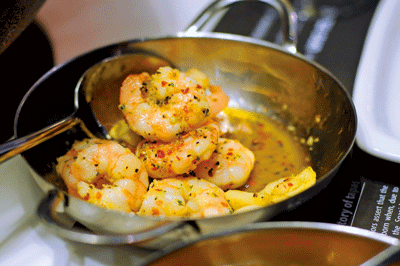
Coming to Asia for Moreno meant making some adaptations to his food, although he believes the Asian influence has enriched his style. “I have tried to adapt myself to the local environment rather than pretending that the environment would adapt itself to me. I have tried to use good-quality, available ingredients and that definitely has led me to have a bit of Asian influence in some of my more contemporary courses,” he says.
At Agua, in Beijing’s fashionable Sanlitun area, executive chef Jordi Valles is a traditionalist who says many of his tapas recipes are more than 100 years old, but he concedes that he too has had to make some concessions in the produce he uses. “I’ve been studying the Chinese market for four years now, and I try to use the same products they like for Chinese food for Spanish recipes that contain similar tastes, and it has been a big success,” he says. “I’m always researching new products and suppliers from Beijing. I’ve also found that while there may be difficulty in obtaining good fresh European ingredients, I have no trouble creating my own dishes.”
In Hong Kong, at the popular Uno Mas restaurant in Wanchai executive chef David Izquierdo Jover, although trained at el Bulli, takes a more purist approach to his largely tapas-based menu, and takes advantage of Hong Kong’s easy access to “jet-fresh” produce to import the best he can from Europe.
“I make 100-percent Spanish dishes,” he says. “In a lot of restaurants you get risotto or Chinese fried rice and they try to tell you it is paella. People say, ‘Your rice is very hard’. But I’m from Valencia and in Valencia rice is al dente. It’s like pasta in a real Italian restaurant. I don’t expect it to be soft.”
Hong Kong now has more than 20 Spanish restaurants, many of them strongly tapas oriented, but fewer than five Spanish chefs. In a town where dim sum, also small in portion but large in variety, is an obsession, tapas service should be easy to understand, but Jover says that to a certain extent cultures still collide.
“You have to understand the food, you have to understand the history. People want all the dishes to come at once, but you have to eat some of them hot. You can’t enjoy the jamon croquettes cold. Now I say I’ll send three now – later another three. That seems to work.”
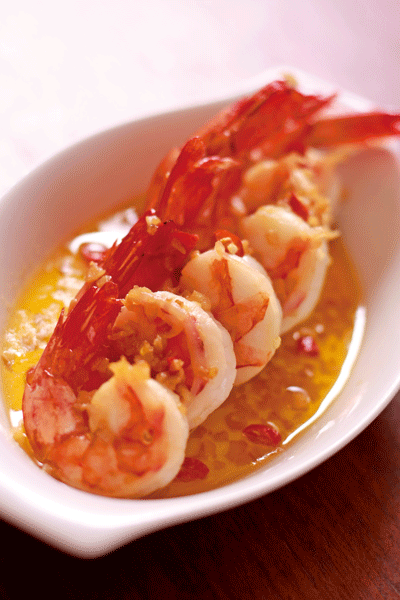
Tapas round the world
An ever-growing number of venues specialising in Spanish tapas can now be found worldwide. Here is a selection of the best from Spain, Asia, and the rest of the world.
Spain
Barcelona
Paco Meralgo – “Montaditos” (savoury morsels served on bread) are a signature at one of Barcelona’s most popular tapas restaurants. Recommended by Jordi Valles and David Izquierdo Jover, who maintains: “In Barcelona they cook with more heart.”
Tel +34 93 430 9027; www.pacomeralgo.com
Donostia-San Sebastián, Gipuzkoa, Basque Country
La Cuchara de San Telmo – the capital of Gipuzkoa province is famous for its “Basque nouvelle cuisine” and this is one of the town’s most highly rated tapas outlets. Stand at the bar, recommends Willy Trulas Moreno.
Tel +34 94 342 0840; www.lacucharadesantelmo.com
Madrid
La Casa Del Abuelo – The place in Madrid for gambas (prawns) grilled, with garlic, or in croquetas. Wash them down with the casa’s own red wine.
Tel +34 90 202 7334; www.lacasadelabuelo.es
Seville
Meson Cinco Jotas – The house claims to serve the best jamon (ham) Iberico in the world, and “5J” ham is certainly a contender. Other outlets in Barcelona, Jabugo, Las Palmas, Madrid and Valencia are also worth trying.
Tel +34 95 421 05 21; www.mesoncincojotas.com
Asia
Hong Kong
Uno Màs – Creative and authentic tapas and paellas among many other dishes from el Bulli-trained Jover, and an excellent Spanish wine list. The croquetas melt in the mouth.
Tel +852 2527 9111; www.uno-mas.com
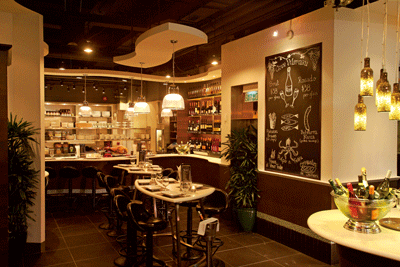
Estudio Iberico – High-quality “5J” ham, cheeses and traditional tapas from an informal bar in Great food hall. Ideal for a quick snack or a long lunch.
Tel +852 2537 2038
FoFo – Classic tapas, sometimes with a fusion twist, form the core of the menu at the Hong Kong arm of Shanghai’s el Willy, currently celebrating its first anniversary. The rooftop with a view of the city’s skyline is a great place to enjoy the food.
Tel +852 2900 2009; www.fofo.hk
Shanghai
el Willy – Tapas Barcelona-style comes to Shanghai in colonial-style surroundings in the heart of the old French concession. Recommended by Jover.
Tel +86 21 5404 5757; www.el-willy.com
Beijing
Agua – The Beijing arm of Hong Kong’s Aqua Group is pioneering high-end tapas in Beijing. Try Jordi Valles’ chorizo, mixed mushrooms with garlic and herbs, and Piquillo red peppers stuffed with seafood.
Tel +86 10 5208 6188; www.aqua.com.hk
Bangkok
Rioja – Owner Angel Esteban claims to operate the only authentic Spanish restaurant in the Thai capital, and imports many of his ingredients from Spain. Recommended by both Jover and Valles.
Tel +66 2515 7612; www.riojath.com
Manila
Barcino Greenbelt 2 – Authentic tapas and a fine selection of Spanish wines at the largest branch of the Barcino Group.
Tel +63 2 501 3250; www.barcino.com.ph
Rest of the world
London
Tapas Brindisa – The UK capital was one of the first cities outside Spain to seriously take to tapas, and this unpretentious and authentic outlet has been one of the city’s favourites for more than 20 years. The next best thing in London to going to Spain.
Tel +44 207 357 880; www.brindisa.co
Paris
Fogon – Tapas and paella are the main attraction at the Parisians’ favourite Spanish restaurant, noted for both jamon and squid.
Tel +33 1 4354 3133; www.fogon.fr
Melbourne
Movida – An Australian take on the tapas tradition in informal bar-like surroundings which capture the essence of the tapas ethos, even if the recipes have had a little adaptation. Moreno recommends.
Tel +61 3 9663 3038; www.movida.com.au
Los Angeles
Bazaar by José Andrés – Modern or traditional tapas? Take your pick from two separate tapas bars in the same SLS Hotel Beverly Hills complex designed by Philippe Starck and overseen by Asturian chef José Andrés.
Tel +1 310 246 5555; www.thebazaar.com








